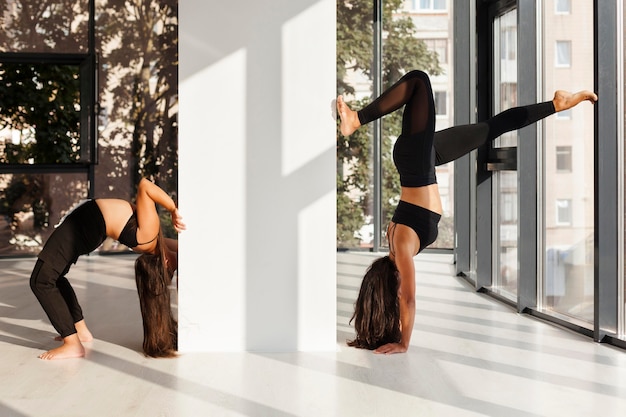
Getting a yoga body isn’t just about being flexible. Yoga can boost your memory, improve heart and bone health, and more, according to Anna Magee.
In the UK, yoga’s popularity is skyrocketing, with people spending £790 million annually on classes and mats. While some trendy yoga forms like rage yoga and dog yoga might seem odd, science is backing up yoga’s real health benefits. At UCLA, a three-month yoga and meditation course was found to be more effective than memory exercises for reducing age-related brain changes. Another study showed it could help breast cancer survivors sleep better.
When Lucy Edge, a former advertising executive, experienced deep depression, she chose yoga over prescribed antidepressants. She took a six-month career break, traveled to India to learn yoga, and returned happier and more content, despite not achieving a “yoga goddess” body. Lucy has since authored three books on yoga and started Yoga Meds to highlight its benefits, supported by over 300 clinical trials on issues ranging from arthritis to obesity.
So, how does yoga benefit your health, and how can you start?
For memory improvement, if you’ve been relying on crossword puzzles and Sudoku, it might be time to try yoga. In a UCLA study, participants over 55 showed better improvements in memory, reduced depression and anxiety, and increased resilience to stress after 12 weeks of yoga and meditation.
To get started, you don’t need excessive practice. The study participants practiced one hour of Kundalini yoga weekly, which includes breathing techniques, meditation, and chanting. They also did a daily 20-minute meditation called Kirtan Kriya, involving chanting, hand movements, and light visualization.
For heart health, yoga can be as beneficial as more conventional exercises like brisk walking. A 2014 systematic review indicated that yoga might lower heart disease risk. Stress, a major contributor to heart disease, can be alleviated through yoga, which lowers stress hormones that elevate blood pressure and heart rate.
Charlotte Watts, a yoga teacher and nutritional therapist, suggests gentle yoga poses for reducing stress, ideal for beginners. Anna Ashby, a senior yoga teacher, recommends Restorative yoga, where postures are supported by bolsters and held for up to 12 minutes, giving the nervous system a break.
For back pain, yoga can be highly effective. Musculoskeletal physiotherapist and yoga teacher Sarah Shone incorporated yoga into a back pain rehabilitation program with impressive results—87% of participants reported less pain. NICE guidelines even recommend yoga for lower back pain.
Yoga also helps with incontinence by strengthening pelvic floor muscles. Since it involves weight-bearing exercises, it can also increase bone density. For beginners, it’s best to start with gentle styles like Hatha or Iyengar yoga, and inform your teacher of any health issues. If you have back pain, your doctor might refer you to subsidized yoga classes.
When choosing a yoga mat, consider its display and durability if it will stay in your living room. For frequent travel, a lightweight mat with a comfortable strap is essential. Taller practitioners should look for longer mats to accommodate their movements comfortably. Thicker mats protect joints, especially for those with knee or wrist pain.
Healthista recommends the Elephant Cork Yoga Mat from Valka Yoga, which is eco-friendly, durable, and designed for comfort. This mat features a beautiful elephant design, is naturally antimicrobial, and is ideal for hot yoga due to its grip when wet.
If you need extra support for challenging poses, a yoga block is helpful. Valka also offers a matching cork yoga block, which provides stability and grip, though it’s heavier than foam.
Whether you’re flexible or not, yoga will enhance your flexibility. Restorative yoga classes, Vinyasa Flow, Iyengar, Anusara, and Yoga Therapy are all excellent choices depending on your goals and preferences. Remember to communicate your needs and health conditions to your yoga teacher to get the most out of your practice.